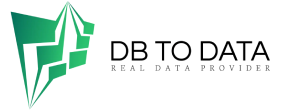Image masking is a powerful technique in graphic design that allows you to create stunning promotional materials by manipulating images with precision. This method involves isolating certain elements of an image to enhance visual appeal, making it particularly useful for marketing campaigns. By using image masking, you can create clean, professional-looking visuals that draw attention and convey your brand message effectively. Whether you’re working on advertisements, brochures, or social media posts, mastering image masking can elevate your promotional materials to new heights. Start by understanding the basics: image masking involves creating a mask or layer that hides parts of an image while revealing others. This technique is invaluable when dealing with complex backgrounds or unwanted elements, allowing you to focus on the key aspects of your promotional content.
1. Understanding Image Masking Basics
Before diving into the practical applications of image masking, it’s important to grasp the fundamentals. Image masking can be achieved through various software tools, such as Adobe Photoshop or similar graphic design programs. There are two main types of masking: layer masking and clipping masks. Layer masking allows you to hide or reveal parts of a layer without permanently altering the original image. Clipping masks enable you to use one layer as a mask for another, creating interesting effects and compositions. Understanding these basics will set the stage for more complex applications of image masking in your promotional materials.
2. Preparing Your Images
The first step in using image image masking service effectively is to prepare your images. Select high-quality images that align with your brand’s aesthetic and message. Ensure that the images are well-lit and have a clear focal point. Once you have your images, import them into your graphic design software. Take the time to analyze each image for elements that may need masking, such as distracting backgrounds or unwanted objects. Proper preparation will make the masking process smoother and more efficient, allowing you to focus on the creative aspects of your promotional materials.
3. Applying Layer Masks
Once your images are prepared, it’s time to apply layer masks. Begin by selecting the layer you want to work on and create a mask. In most graphic design software, this can be done by clicking on the layer mask icon. Use a the saga continues: “elyria chronicle telegram” in the digital age brush tool to paint over the areas you want to hide, ensuring that you’re revealing the parts of the image that matter most. Adjust the brush opacity for more control and to create a smooth transition between masked and unmasked areas. Experiment with different brush sizes and hardness levels to achieve the desired effect. Layer masks allow you to refine your images without permanently altering them, giving you the flexibility to make adjustments as needed.
4. Using Clipping Masks for Unique Effects
Clipping masks are another powerful tool for enhancing your promotional materials. To create a clipping mask, place your desired image above another layer, then right-click and select “Create Clipping Mask.” This process singapore lead the top image to take the shape of the bottom layer, enabling you to create interesting effects and compositions. For example, you can use text as a clipping mask to fill it with an image, making your promotional materials more visually appealing. Experiment with different images and text combinations to find the perfect look for your campaign. Clipping masks provide endless creative possibilities, allowing you to showcase your brand in unique ways.
5. Refining Your Designs
After applying image and clipping masks, take the time to refine your designs. Zoom in to check for any rough edges or inconsistencies in the masking. If necessary, go back and adjust your layer masks to achieve a cleaner look. You might also want to add additional elements, such as text overlays or graphics, to complement your images. Pay attention to the overall composition and ensure that your promotional materials are visually balanced. Keeping your brand colors and fonts consistent throughout will help unify your design and reinforce your brand identity.
6. Finalizing and Exporting Your Work
Once you’re satisfied with your designs, it’s time to finalize and export your work. Save your project in the native format of your graphic design software to retain all layers and masks for future edits. Then, export your promotional materials in the appropriate format for your intended use, whether it’s for print or digital distribution. For print materials, consider exporting in high-resolution formats such as TIFF or PDF. For digital use, JPEG or PNG formats may be more appropriate. Always double-check that your images are properly masked and that the final product meets your standards before sharing it with your audience. By mastering image masking, you can create promotional materials that not only look professional but also effectively communicate your brand message.

